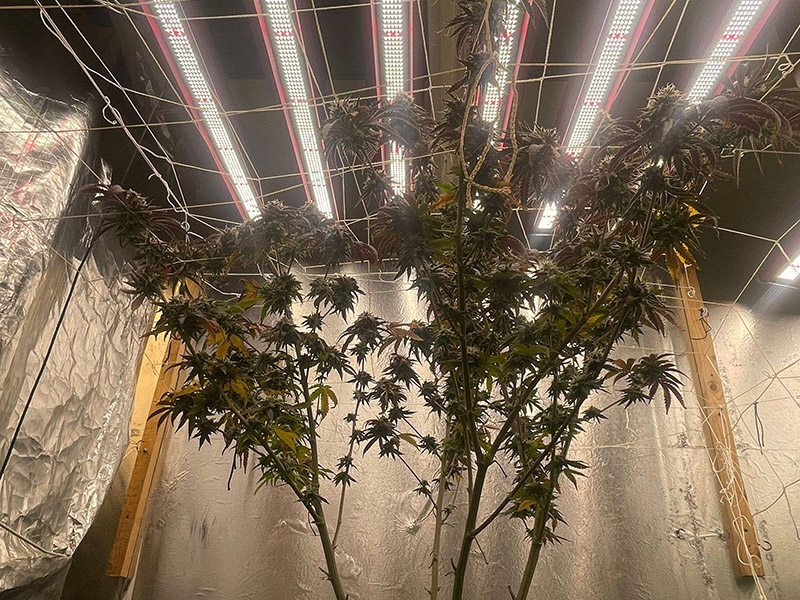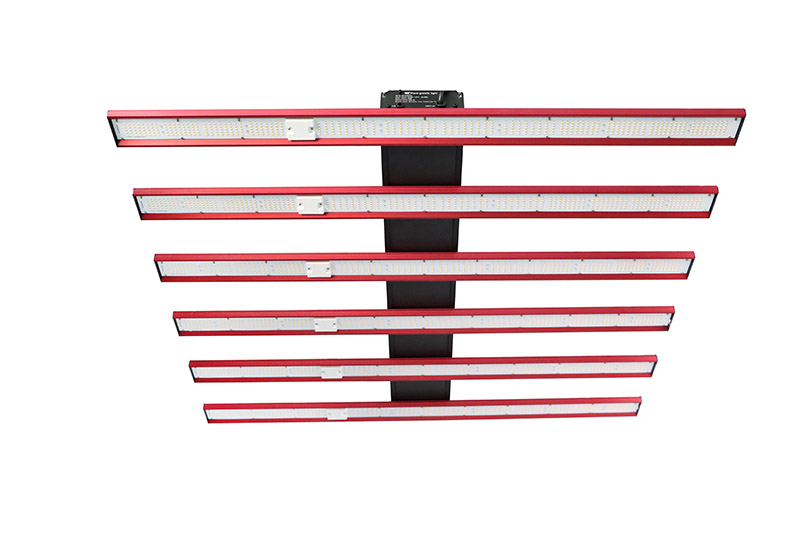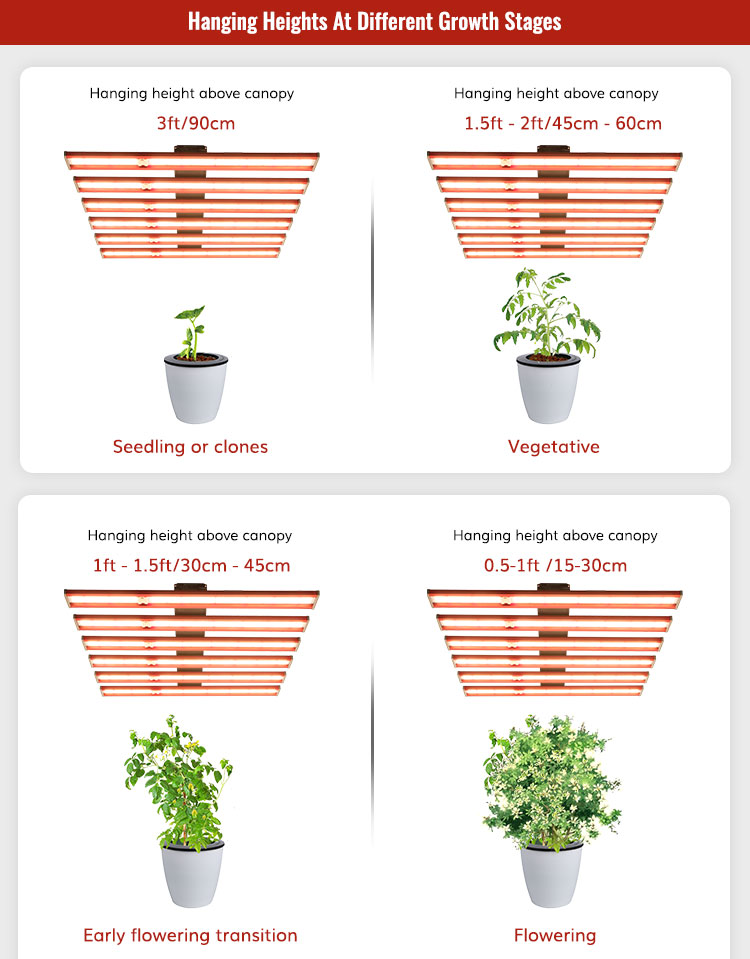Lighting system is one of the most important factors for any growing environment. Every grower will use all his experience and skills to provide the suitable light and energy to their plants, not too much or too less. Then we will have a question: how close should grow lights to plants?
Actually, there is no direct answer Yes or No. There are several factors have effect on the result.
1. What kind of grow light used in grow room?
There are a lot of grow lights for choice, such as fluorescent grow light tube, HID light, COB light, HPS grow light etc. But more and more growers would make the LED grow lights as their first choice in nowadays.
2. What kind of plants cultivated in grow room?
As we know, some plants like sun light, some others like dark environment. We must follow it.

LED grow light basic understanding
Before we begin te comparison between LED to other all traditional lamps, there are several terminologies that measure the light you should know:
PAR(Photosynthetic Active Radiation): PAR is often misunderstood as measurement. It actually defines the type of light needed to support photosynthesis in plant life. People defines different type of light by their wavelengths.
PPF(Photosynthetic Photo Flux): PPF measures the total amount of light that is produced by a light source each second, it shows how much PAR is emitted by a light source per second.
PPFD(Photosynthetic Photon Flux Density): PPFD measures the light that actually arrives at the plant. It is a measurement of the amount of light that actually reaches your plants.
Now, we have known light very well, we can find out the factors that have effect on grow light distance to plants:
1.Grow light type effect on distance.
Also we call it “LED VS traditional lamps”. Different types lamps provide different light intensity and light spectrum. It means the distance is changeable.
LED VS Fluorescent Compared to fluorescent light, LED lights are up to 80% more efficient. LED lights convert 95% of their energy into light and only 5% is converted to heat.
LED VS HID HID stands for High Intensity Discharge. These lights are well known for their impressive light output and outstanding brightness. But it is high heat which means you have to spend energy on cooling. LED provides less heat, less maintenance. Because LED is 50,000 hours span life while HID is only less than 20,000 hours.
No matter you find it out or not, LED is more and more widely used in indoor farming projects. And as estimated, more than 87% of all light types would be LEDs by 2030.

2.Wattage effect on distance.
Generally speaking, the lower wattage your grow light is, the closer the grow light should be to plants; the higher wattage your grow light is, the farther the grow light should be to plants. Because LED grow light is low heat consumption, it can work closer to plants and no harm to plants.
Here is some suggestions when you decide to build a lighting solution for your grow room:
- It needs 20-40 wattage to cover one square foot.
- Low wattage LED grow lights are suggested to hang 12 inches on the top of the plants.
- High wattage LED grow lights are suggested to hang 36 inches on the top of the plants.

 VANQ LED tube Grow bar light T8 20W
VANQ LED tube Grow bar light T8 20W
But you should know that wattage is just a simple measurement of electricity, it is not always workable to choose correct LED grow light for your plants by their wattage. There are still some factors more important than wattage.
For example, the spectrum of the LED grow light. Spectrum would actually affect on your plant growth at different stages.
3.Plant stage effect on distance.
As plants growing, they have different requirements on light intensity at different growing stages. Normally, there are total 3 stages for plant growth: Seedling, Vegetative and flowering.
But how close should a grow light to plants in each stage? Just like child needs more food and energy as he grows, plant needs more light and energy as it grows. You should shorten the distance between lights to plants as time goes by.
Seedlings need the least amount of light intensity. The LED grow light could be highest hang to plants. Of course, you could fix your lights and use light controller to dim the light darker. As plants come into vegetative phrase, you should lower the height of your lights or dim the light brighter. In the final stage of life cycle, plants need the highest light intensity to support the flowering. At this time, master growers should change their lights more closer to plants.
And also you should observe your plants carefully to avoid the lights are too close or too far to plants.

4.Sign of unhealthy plants
It is necessary to increase the light intensity while the plants are growing. But you should take the action carefully to avoid the too fast or too slow. Look out the following telltale sign of distress:
Irregular or stunted growth – Usually characterized by leaves becoming limp, curly, or dropping.
Bleaching – Typically indicated with white or yellow spots on the top leaves.
Burning – This normally starts with thin brown outlines on the leaves closest to the light before discoloration of larger sections becomes apparent. Take care, what sometimes looks like light burn may actually be nutrient burn.
stretched and weak.
color loss. Please take care of it when the leaves color become pale.
When your plants have above signs, you should check your light system to find the reason to stop the loss.
Conclusion
Obviously, there is no rule of thumb to guard us the distance between lights to plants, but we can know what the plants need at their different stages. And what we need to do is follow the plant growth characteristic and provide the suitable light intensity at the correct time. Then you would be a master grower.























